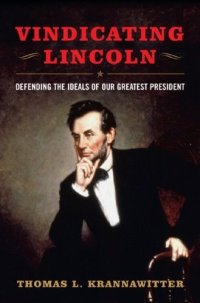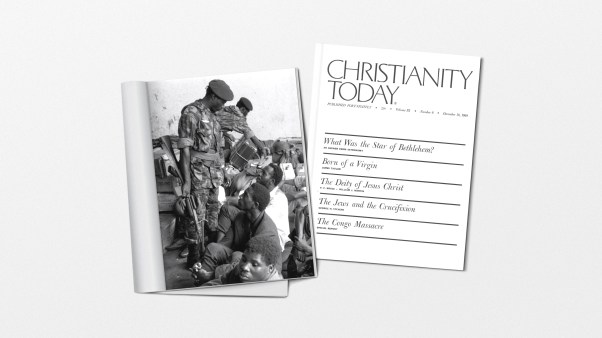In this series


Update: Disaffiliations approved by UMC conferences now total more than 5,800 churches as of June 16, 2023.
Nearly four years ago, the United Methodist Church approved an exit plan for churches wishing to break away from the global denomination over differing beliefs about sexuality, setting in motion what many believed would be a modern-day schism.
Since then, a new analysis has found, it’s fallen well short of that.
That analysis of data collected by the church’s General Council on Finance and Administration shows 6.1 percent of United Methodist churches in the US—1,831 congregations out of 30,000 nationwide—have been granted permission to disaffiliate since 2019. There are no good figures for international departures among the estimated 12,000 United Methodist churches abroad.
The denomination’s disaffiliation plan gives churches until December 31 to cut ties, and many have already made known their desire to leave. Those churches can take their properties with them after paying apportionments and pension liabilities. Others are forcing the issue through civil courts.
But whatever the final tally may be, the analysis suggests the country’s second-largest Protestant denomination—numbering 6.4 million US members and 13 million worldwide—may weaken but is unlikely to break.
“You think of a schism as 50 percent or even 35 percent (split),” said Scott Thumma, director of the Hartford Institute for Religion Research and a lead researcher for the 2020 US Religion Census. “This is not a real schism.”
The 1,831 church departures come as United Methodist bishops say they’re battling misinformation from conservative groups that encourage churches to leave the denomination for the newly formed Global Methodist Church, which has declared it will never ordain or marry LGBTQ people—the crux of the conflict.
In turn, the Global Methodist Church and groups like the Wesleyan Covenant Association, a network of theologically conservative churches, argue that the denomination’s regional conferences are making it prohibitively hard for churches to leave.
The high-stakes duel has hit some regions of the country harder than others. But four years into what has been depicted as a breakup of the denomination, the picture is less climactic than anticipated.
“Some are leaving but the number of churches and members moving forward is far larger,” said Hope Morgan Ward, retired bishop of the North Carolina conference. “It is important to focus on who is staying and moving forward in the continuing United Methodist Church.”
The past year has brought “mixed emotions,” according to Bishop Thomas Bickerton of the New York Annual Conference, who leads the United Methodist Church’s Council of Bishops. Bickerton described it as a “period of disunity.”
In March 2022, the United Methodist Church announced a third delay for the 2020 meeting of its global decision-making body, the General Conference. Delegates were expected to consider a proposal to split the church in 2020. Then came the COVID-19 pandemic.
The final delay prompted some Methodists to go ahead in May and launch the Global Methodist Church rather than wait for the outcome of a General Conference meeting.
In the meantime, the denomination’s 54 US-based regional bodies called conferences have been approving disaffiliations at their regular meetings and at a flurry of special sessions.
https://datawrapper.dwcdn.net/hnZi8
The Texas Annual Conference, a region that covers East Texas with headquarters in Houston, lost 302 of its nearly 600 churches—the most of any conference, the analysis reveals.
Analysis of the denomination’s data shows the largest number of churches choosing to leave are located in the Southeastern and South Central US
The five conferences with the greatest number of exiting churches are in Texas, North Carolina, Alabama, and Indiana. These five conferences, with two in Texas, account for 57 percent of all departures. Contrast that with Bickerton’s own New York conference, where no churches have left yet, though six are discussing it, according to the bishop.
The Southeastern and South Central conferences tend to be more conservative and evangelical in their beliefs, said Will Willimon, a retired United Methodist bishop and a professor of the practice of Christian ministry at Duke Divinity School. Politically, they vote Republican and are far more resistant to gay rights.
“Those wishing to disaffiliate will deny that, but to me it’s another instance of how the Methodist movement has a long history of being very influenced by secular worldly political matters,” Willimon said.
The United Methodist conflict is just the latest upheaval over sexuality for Protestant denominations in the United States.
Hundreds of churches left the Episcopal Church after it elected its first gay bishop in 2003. They formed the Anglican Church in North America, which now has nearly 1,000 churches. Likewise, a change allowing same-sex marriage in the Presbyterian Church USA’s constitution led many congregations to break away.
The Rev. Keith Boyette, who heads the Global Methodist Church as its transitional connectional officer, said views on sexuality are only one reason churches leave.
“I believe, for many of the churches, that’s just been a presenting issue, and that the reasons why they want to leave are much more significant,” he said. “Some have grown weary of the never-ending conflict.”
Bickerton doesn’t disagree.
“Our provision that allows for disaffiliation is based on a church reaching the conviction that they can’t stay a part of the denomination over matters of human sexuality,” said Bickerton, president of the Council of Bishops. “What we find is that people are using that paragraph to disaffiliate for other reasons.”
Some don’t want to be part of organized religion or don’t like the denomination’s apportionment system or aren’t happy with their current pastor or disagree with the actions of their bishop—or a leader in another part of the country or world, according to the bishop.
The result has been a messy disaffiliation process in some conferences.
Some churches have taken to suing conferences to be allowed to leave immediately, including 38 churches in the Western North Carolina Annual Conference.
The Wesleyan Covenant Association has called on its network of churches to withhold apportionments, or pooled giving, to those conferences it believes are making it more difficult for congregations to leave.
And in recent weeks, the bishop of North Georgia Annual Conference announced she was temporarily blocking any of its churches from leaving the denomination, citing the spread of “defamatory” misinformation.
In addition, it now appears not all exiting churches are joining the newly formed Global Methodist Church.
Only 1,100 churches have joined the Global Methodist Church since it launched in May—98 percent of them located in the US—according to a recent announcement from the new denomination. That means the new denomination has absorbed 58 percent of departing United Methodist churches in the US
White’s Chapel near Fort Worth, Texas—one of the largest United Methodist churches in the US, with a membership of 16,000—disaffiliated last year, saying it hopes to create its own network of like-minded Methodist churches.
Frazer Memorial, a church of 4,000 members in Montgomery, Alabama, opted to join a smaller denomination known as the Free Methodist Church.
And the The Woodlands, a church of about 14,000 members north of Houston, has yet to decide if it wants to affiliate with the Global Methodist Church.
The Rev. Rob Renfroe who recently retired as a pastor of The Woodlands said he believes the Lonestar State is leading in disaffiliations, in part, because it’s simply easier to do so there.
“What we’re finding in Texas is that, where there is a fair and open process for disaffiliation, that many churches are doing so,” said Renfroe, the president of Good News, a theologically conservative advocacy group within the United Methodist Church.
But Boyette argues the numbers joining the new denomination are “close to being miraculous” given what he said is a costly and cumbersome process in many annual conferences.
“I believe that the powers that be in the United Methodist Church have been surprised by the number of churches that desire to disaffiliate in some annual conferences,” Boyette said.
This conflict over sexuality coincides with an ongoing decline in membership within the denomination.
The United Methodist Church dropped from 7.7 million members to 6.4 million in the US over the past decade, a loss of 1.3 million members. The average age of its members is 57. And it is closing more churches than starting new ones. The effect of the split will add to those losses.
The 1,831 disaffiliating churches may ultimately include up to 400,000 members (though departing churches are unlikely to bring all their members along; some may switch to another United Methodist church). The denomination will also lose an estimated million in annual contributions to the denomination—about 5.5 percent of the denomination’s pooled giving.
Bickerton said the losses aren’t just financial.
The denomination also is losing voices and perspectives he believes are important, though he is resigned to the fact that some churches will choose to leave. United Methodists must bless them as they depart, he said.“I would always say to people that when we’re together, we’re a better reflection of Jesus than any of us are by ourselves, which is to say that we need that divergent thought,” Bickerton said. “We need conservatives and liberals and moderates in order to be the body of Christ that we proclaim to be.”
We had a guest in my “U.S. History since 1865” classes last week, Thomas Krannawitter from Hillsdale College in Michigan. Krannawitter was in town to lecture on his latest book, Vindicating Lincoln, and address my colleague’s political science classes. It fit his schedule to visit my history classes, too. Even though the syllabus indicated that we were heading into the 1960s instead of the 1860s, my guest had no difficulty bridging the chronological gap with an analysis of changing perspectives on the Constitution and what came to be called civil rights.
Before proceeding, let me be clear that I do not know whether Krannawitter would call himself a libertarian. I did not ask him, nor do I know nearly enough about political philosophies to understand who might be flattered or horrified by association with the term. Wikipedia defines at least 10 strains of libertarianism, one of which includes small-government constitutionalists, and that’s at least his ballpark. I should also admit that I have not read Vindicating Lincoln, so my comments refer to a guest lecture rather than to any published work. (It seems I’m on a roll with admitting things here. I don’t enjoy Tolkien. There. I said it.)
To create a conversation using data points from my History 102 course, I asked Krannawitter, “How did civil rights legislation of the 1950s and ?60s continue or deviate from the Reconstruction Amendments we studied back in January?”
With a little prodding, my students were able to recall those amendments: the 13th, abolishing slavery; the 14th, granting equal protection to all American citizens; and the 15th, granting voting rights regardless of race, color, or prior servitude. Krannawitter then sketched an even longer historical narrative on the board, writing Declaration of Independence, Constitution, 13th, 14th, 15th Amendments, Plessy v. Ferguson, Brown v. Board of Education, and the Civil Rights Act of 1964. I will summarize his comments on each.
The Declaration of Independence, Krannawitter said, asserted equality among humans based on equal possession of natural rights. This seemed to be his ideal statement of political philosophy. The Constitution basically translated this notion of rights into government, but it compromised on slavery, because without such compromise it could not have amassed sufficient support of the governed to pass. In the middle of the 19th century, when that compromise frayed, Abraham Lincoln led the country into war to restore African Americans’ natural rights. Lincoln had argued for these rights in his debates with Stephen Douglas, and he was willing to sacrifice millions of Union soldiers for this cause. Without Lincoln, Krannawitter averred, there might not have been a Civil War. Few other Americans of the era were willing to take support for natural, inalienable rights as far as he was.
Following the war, the Reconstruction Amendments brought the Constitution in line with the promise of the Declaration of Independence. Unfortunately, instead of ushering in a just and equitable republic, Reconstruction gave way to the long regime of Jim Crow, which Krannawitter described as nothing less than a brutal campaign of domestic terrorism. In Plessy v. Ferguson, an 1896 case about railroad cars in Louisiana, the Supreme Court upheld the Jim Crow emphasis on racial segregation, allowing for “separate but equal” facilities. Only Justice John Marshall Harlan dissented from the ruling, complaining not that separate facilities were inherently equal, but that any law taking account of race was automatically unconstitutional, because the Constitution recognizes no such distinction. “There is no caste here,” he wrote. “Our Constitution is color-blind, and neither knows nor tolerates classes among citizens. In respect of civil rights, all citizens are equal before the law.” According to Krannawitter, Lincoln would have emphatically agreed.
In the 1954 case Brown v. Board of Education of Topeka, the Supreme Court threw out the separate but equal idea, but, to Krannawitter’s chagrin, it did not use Harlan’s reasoning. Instead, the Court drew on, among other things, a study by educational psychologists that asserted children were mentally harmed by segregation. In other words, the decision rested more on social science and the needs of groups (in this case, African-American children) than on natural individual rights enshrined in a color-blind Constitution. The Civil Rights Act of 1964 went even further in identifying and seeking to meet the needs of various demographic groups. Krannawitter finds the ubiquitous racial check-boxes on employment applications prompted by this act especially galling. He checks or writes in “other: human.”
Most controversially, Krannawitter ended his guest stint in my class by suggesting that, despite President Obama’s many evocations of the Lincoln legacy, the only thing the men have in common is Illinois roots. Lincoln, to Krannawitter, represents the individual rights school of thought. Obama comes from the group rights school founded by early 20th century Progressives (whom Krannawitter really dislikes). Lincoln saw the role of the U.S. government as preventing some citizens from infringing upon the natural rights of other citizens. The list of rights is small and never essentially changes. Obama, as a Progressive, sees the role of the government as granting rights not just for protection from other citizens, but for things like health care, a living wage, and decent housing. The list of rights grows whenever the government is willing and able to expand it.
I don’t know if I agree with Krannawitter’s narrative. It did make me wonder a lot about intersections between Christian thought and the individual vs. group rights debate. Many, but not all, of the founders who touted natural rights were Deists, taking their philosophical cues from the Enlightenment rather than the church. Many, but not all, of the activists in 20th century campaigns for civil rights were Christians. Off the top of my head, I can’t think of any Scriptures that either identify “life, liberty, and the pursuit of happiness” as God-given rights or mandate Equal Employment Opportunity. I suspect that Lincoln, who could see both sides of so many issues, could see both sides of this one as well.









